#environmental degradation
Explore tagged Tumblr posts
Text
Excerpt from this story from Inside Climate News:
Most people are “very” or “extremely” concerned about the state of the natural world, a new global public opinion survey shows.
Roughly 70 percent of 22,000 people polled online earlier this year agreed that human activities were pushing the Earth past “tipping points,” thresholds beyond which nature cannot recover, like loss of the Amazon rainforest or collapse of the Atlantic Ocean’s currents. The same number of respondents said the world needs to reduce carbon emissions within the next decade.
Just under 40 percent of respondents said technological advances can solve environmental challenges.
The Global Commons survey, conducted for two collectives of “economic thinkers” and scientists known as Earth4All and the Global Commons Alliance, polled people across 22 countries, including low-, middle- and high-income nations. The survey’s stated aim was to assess public opinion about “societal transformations” and “planetary stewardship.”
The results, released Thursday, highlight that people living under diverse circumstances seem to share worries about the health of ecosystems and the environmental problems future generations will inherit.
But there were some regional differences. People living in emerging economies, including Kenya and India, perceived themselves to be more exposed to environmental and climate shocks, like drought, flooding and extreme weather. That group expressed higher levels of concern about the environment, though 59 percent of all respondents said they are “very” or “extremely” worried about “the state of nature today,” and another 29 percent are at least somewhat concerned.
Americans are included in the global majority, but a more complex picture emerged in the details of the survey, conducted by Ipsos.
Roughly one in two Americans said they are not very or not at all exposed to environmental and climate change risks. Those perceptions contrast sharply with empirical evidence showing that climate change is having an impact in nearly every corner of the United States. A warming planet has intensified hurricanes battering coasts, droughts striking middle American farms and wildfires threatening homes and air quality across the country. And climate shocks are driving up prices of some food, like chocolate and olive oil, and consumer goods.
Americans also largely believe they do not bear responsibility for global environmental problems. Only about 15 percent of U.S. respondents said that high- and middle-income Americans share responsibility for climate change and natural destruction. Instead, they attribute the most blame to businesses and governments of wealthy countries.
Those survey responses suggest that at least half of Americans may not feel they have any skin in the game when it comes to addressing global environmental problems, according to Geoff Dabelko, a professor at Ohio University and expert in environmental policy and security.
Translating concern about the environment to actual change requires people to believe they have something at stake, Dabelko said. “It’s troubling that Americans aren’t making that connection.”
23 notes
·
View notes
Text

Sand theft
#sand theft#environmentalism#environmental health#environmental awareness#environmental science#resource depletion#natural resources#natural resource depletion#environmental destruction#environmental degradation#wikipedia#wikipedia pictures#nature#wikimedia commons#illegal mining
27 notes
·
View notes
Text
What I Could Do Less Of: A Philosophical and Sociological Reflection
Daily writing promptWhat could you do less of?View all responses We, unfortunately, live in a society, at least in Western countries, where demands for attention, resources, and energy seem infinite, one of the most profound questions we can ask ourselves is, What could I do less of? Photo by Prateek Katyal on Pexels.com Superficially, this question might evoke trivial answers: fewer…

View On WordPress
#accumulation of wealth#artificial desire#awareness#Buddhism#capitalism#civil injustice#compassionate#conflict#connection#Consumerism#cooperation#cultural homogenization#dailyprompt#dailyprompt-2146#division#Economics#environmental degradation#Environmental Destruction#equitable#fight capitalism#fight consumerism#fight profit#global inequalities#Grow#Growth#hoarding#inequality#joy#meaning#moral failing
2 notes
·
View notes
Text
In retrospect, it was a bad sign that on election day in Ohio the temperature hit a high of 80 degrees
#wooloo-writes#wooloo writes#us elections#environmentalism#environmental destruction#environmental degradation#environmental disaster#climate change#global warming#and its only going to get worse from here#WE ARE FUCKED!#ROYALLY AND TRULY FUCKED!#Biden was doing shit to help mitigate environmental catastrophe#now that's out the window#trump believes climate change is a hoax
4 notes
·
View notes
Text
Popular Canary Island told 'No More Hotels' as tourist fury from locals soars
The Gran Canaria Cabildo has opened a public consultation to gauge its residents’ opinions on the island’s current tourism model as anger and frustration continue to grow. The survey, which features 11 questions, comes in response to increasing discontent among locals. Tensions hit new heights last year when two large-scale protests took place amid growing concerns over mass tourism’s damaging…
#anger and frustration#damaging environmental and social impact#environmental degradation#environmental impact#Gran Canaria#hotel moratorium#housing crisis#large-scale protests#mass protests#poverty#sustainable future#tourism#tourism model
0 notes
Text
The Twin Threats: Climate Change and Environmental Degradation
Introduction Climate change and environmental degradation are among the most pressing global challenges of our time. These twin threats impact biodiversity, weather patterns, and the quality of life for millions worldwide. Tackling these issues requires a comprehensive understanding of their causes and effects, alongside collaborative efforts to implement sustainable solutions.
Understanding the Impact of Climate Change The science is clear: rising global temperatures are disrupting ecosystems, melting polar ice caps, and increasing the frequency of extreme weather events. Coastal cities face the imminent threat of rising sea levels, while inland regions grapple with prolonged droughts and erratic weather. Studies on climate impacts highlight the urgency of reducing greenhouse gas emissions to mitigate long-term environmental damage. Explore how these shifts are affecting ecological stability here.
Environmental Degradation: A Growing Concern Human activities such as deforestation, overfishing, and industrial pollution are exacerbating environmental degradation. The destruction of natural habitats is leading to biodiversity loss at an unprecedented rate. This not only disrupts ecosystems but also diminishes the resources upon which humanity depends. A detailed examination of the drivers and consequences of environmental degradation can be found here.
The Need for Action To combat these issues, governments, organizations, and individuals must adopt sustainable practices. This includes transitioning to renewable energy, conserving natural habitats, and promoting policies that prioritize environmental health. Education and awareness are critical in fostering global participation in climate and environmental initiatives.
Conclusion The fight against climate change and environmental degradation is a collective responsibility. By understanding the interconnectedness of these challenges and taking decisive action, we can create a sustainable future for generations to come.
If you have an active research ongoing kindly visit our journal website
#Climate Change#Environmental Degradation#Sustainability#Biodiversity#Global Warming#Renewable Energy
0 notes
Link
1 note
·
View note
Text
Effects of Air Pollution on the Taj Mahal: A Monument in Peril
The Taj Mahal, often celebrated for its stunning beauty, has suffered dramatically from the effects of air pollution over the years. Once a shimmering white monument, it now bears the marks of environmental degradation, resulting in a yellowish-brown film that obscures its grandeur day and night. This decline is primarily due to pollution from industrial activities and the increasing vehicle…
#Agra pollution#air pollution#effects of air pollution on Taj Mahal#environmental degradation#heritage preservation#marble discoloration#Taj Mahal#Yamuna River pollution
0 notes
Text
Impact of Hydro Projects on Kinnaur: Landslides, Floods, and the Unstable Mountains of Nigulseri
#EnvironmentalImpact#Floods#HimachalPradesh#HydroProjects#Kinnaur#Landslides#MountainStability#NaturalDisasters#Nigulseri#SustainableDevelopment#Environmental degradation#Floods in Kinnaur#Himachal Pradesh natural disasters#Hydro projects impact#Kinnaur landslides#Nigulseri mountain sliding#Sustainable development#Tunnels in mountains
0 notes
Text
[Image Description: There are nine images being described. The images describe different crisis' the Congo is facing at the hands of three trillion-dollar corporations (Apple, Alphabet (the parent company of Google), Microsoft) and two billion-dollar corporation (Tesla and Dell Technologies). The resulting ID is long, and thus has been placed behind the 'Keep reading' link.
The first image contains two pictures, one at the top of the image and the other at the bottom, with black text on a white background in the middle. The top picture is of the Congo Rainforest and Basin, a vibrant green rainforest with a winding brown river cutting through the middle of the picture from top to bottom. The bottom picture is of a mining expedition in the Congo. A large Hydraulic Mining Shovel is in the foreground of the picture and a comparatively tiny human stands beside it on the right side of the picture. The background of the picture is brown, dug-up dirt and the wall of dirt behind the Hydraulic Mining Shovel and human extends past the top of the picture. They are far below surface level. The text in the middle is titled "Congo v. Apple, Tesla, Google, Microsoft, and Dell. Congo involves each and every one of us." and contains a quote from Friends of the Congo which reads: "The main request from local Congolese leaders is for others around the globe to build solidarity to help amplify their voices and build relationships with other justice advocates (climate, Indigenous, youth, human rights, artists and musicians)."
The second image uses the same format as the prior image, with two pictures and a section of text in the middle. The top picture is of the outside of an Apple store, with the Apple logo shown clearly in the centre of the image. The bottom picture is of underage children mining cobalt. There is a young boy in the foreground, wearing only shorts and covered in dust, crouched and holding a small hammer. There are four other people in the background of indeterminate age. The text in the middle is titled "Child Labour" and reads: Cobalt exploitation in Congo starkly reflects the neocolonial underpinnings of our global economic system, as multinational corporations, driven by profits and greed, exploit vulnerable communities, forcing children into hazardous mining labour, perpetuating an unjust cycle of oppression (Amnesty International, 2016).
The third image uses the same format as the prior image, with two pictures and a section of text in the middle. The top picture is of the outside of a Google store, with the logo and brand name clearly shown. The bottom picture is of a young woman in a field of dirt mounds. She is in the foreground of the picture, and is bent over and holding a cardboard box with fabric lining the bottom in one of her hands while the other holds a small child to her chest. There is a young man present in the background, on the right side of the picture. The text in the middle is titled "Women's Rights" and reads: Within the cobalt mining landscape, women bear the brunt of an inherently unequal system, where their rights are trampled upon amidst a backdrop of corporate greed and capitalist structure that systemically marginalizes and subjects them to gender-based violence (Human Rights Watch, 2019).
The fourth image uses the same format as the prior image, with two pictures and a section of text in the middle. The top picture is of the outside of a Tesla store, with the logo clearly shown in the middle of the picture. The bottom picture is of a large group of displaced Congolese people. They are moving in three lines and are transporting essential items such as bedding. The text in the middle is titled "Genocide and War" and reads: The intertwining of cobalt extraction with conflict financing exposes the dark underbelly of a capitalist world order, where profit motives often fuel violence and geopolitical instability, revealing the neocolonial legacy that continues to haunt the affected regions (Global Witness, 2016).
The fifth image uses the same format as the prior image, with two pictures and a section of text in the middle. The top image is of the inside of a Dell Technologies store, with the Dell Technologies logo and brand name shown clearly alongside 23 display computers. The bottom picture is of 24 Congolese people standing in the foreground of the image. Behind them are numerous white tents that extend past the top of the image. The text in the middle is titled "Land Dispossession" and reads: Cobalt mining, echoing historical patterns of colonial resource exploitation, strips local communities of their land rights, casting a shadow on the purported ideals of self-determination while reinforcing a neocolonial dynamic that perpetuates land dispossession (International Labour Organization, 2020).
The sixth image uses the same format as the prior image, with two pictures and a section of text in the middle. The top image is of the outside of a Microsoft store, with the Microsoft logo and brand name clearly shown on the left and right of the image. The second image is of a dirt valley, which is likely an old cobalt mine, with numerous people in the middle. There is no vegetation to be seen and countless sandbags piled on top of each other to decrease land degradation. The text in the middle is titled "Environmental Degradation" and reads: The environmental degradation resulting from cobalt exploitation serves as a poignant metaphor for the ecological costs paid by marginalized nations to fuel the insatiable machinery of capitalist consumption, underscoring the urgent need for a more sustainable and just economic paradigm (United Nations Environment Programme, 2017).
The seventh image contains five graphs and is aptly titled "Big Tech Profits Off Atrocities". Each graph shows the revenue of the five companies (In order of graph appearance: Google, Microsoft, Dell, Tesla, and Apple). The first graph is titled "Revenue of Google from 1st quarter 2008 to 3rd quarter 2023 (in million U.S. dollars)". The most recent data point plotted is from the 1st quarter of 2023, which rests just under 80,000 million U.S. dollars. The second graph is titled "Microsoft's net income from 2002 to 2023 (in billion U.S. dollars)". The most recent data point plotted is from 2023, which rests at 72.36 billion U.S. dollars. The third graph is titled "Dell Technologies net revenue worldwide from 1996 to 2023 (in billion U.S. dollars)". The most recent data point plotted is from 2022, which rests at just above 100 billion U.S. dollars. The fourth graph is titled "Tesla's revenue from FY 2008 to FY 2022 (in million U.S. dollars)". The most recent data point plotted is from 2022, which rests at 81,462 million U.S. dollars. The fifth graph is titled "Apple's net income in the company's fiscal years from 2005 to 2023 (in billion U.S. dollars)". The most recent data point plotted is from 2023, which rests at 96.99 billion U.S. dollars.
The eight image contains three paragraphs of white text on a black background, with lines coloured green, red, and blue separating them. The first paragraph reads: We're not buying McDonalds in 2024, or Starbucks or Puma. 🇵🇸 We're not replacing our phones because we feel like it. We're not replacing our laptops because we don't know what else to ask for for Xmas. The second paragraph reads: We're not buying five devices that are identical in every way but size. 🇨🇩 We're not being friends with people who deny that what is happening in Palestine, Sudan or Congo is horrific and has to stop. The third paragraph reads: We're not explaining empathy to Zionists or racists in 2024.
The ninth image contains three rectangular sections: the top section is coloured black, the middle section is coloured green, and the bottom section is coloured red. There is text in each section. The top section's text is written in white. It reads: The UAE are funding crimes against humanity in Sudan, Palestine, Yemen, and Congo. The words "crimes against humanity" are written in red. The middle section's text is written in black and all capitals. It reads: Join us to protest the force that funds these atrocities. The bottom section's text is written in white. It reads: Sunday 14th January 12 noon. London.
/.End ID]
Learn about Congo 🇨🇩 We cannot , after finding out so shamefully late about the genocide, continue as per. We have to change our choices and make the effort to be as ethical as we can and talk about this!
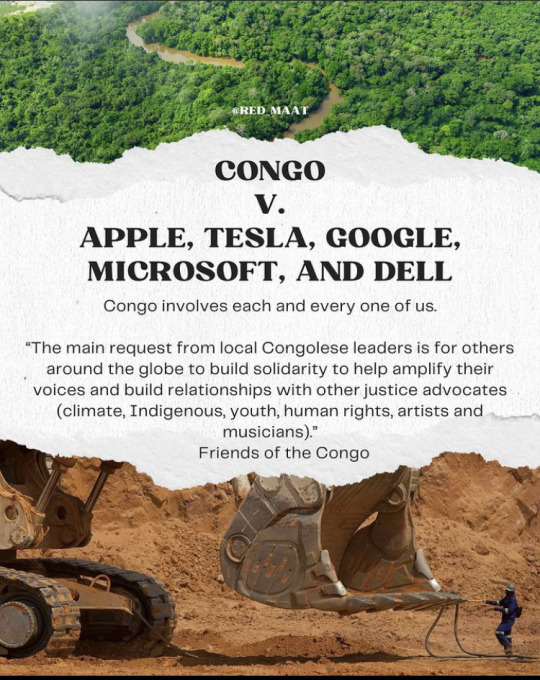
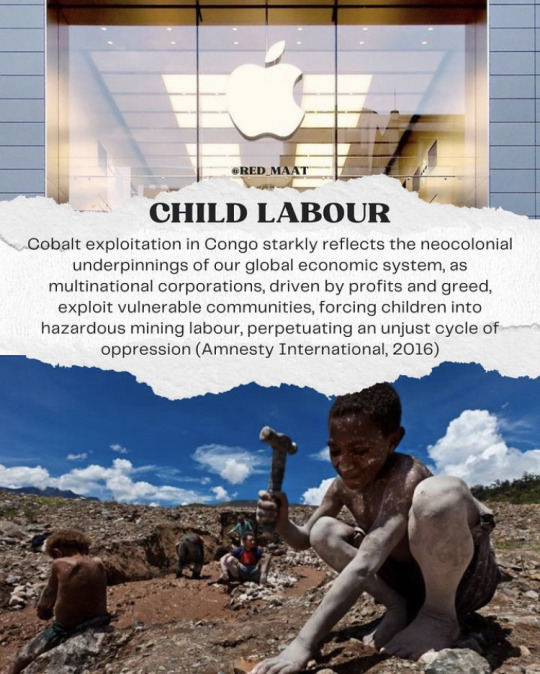

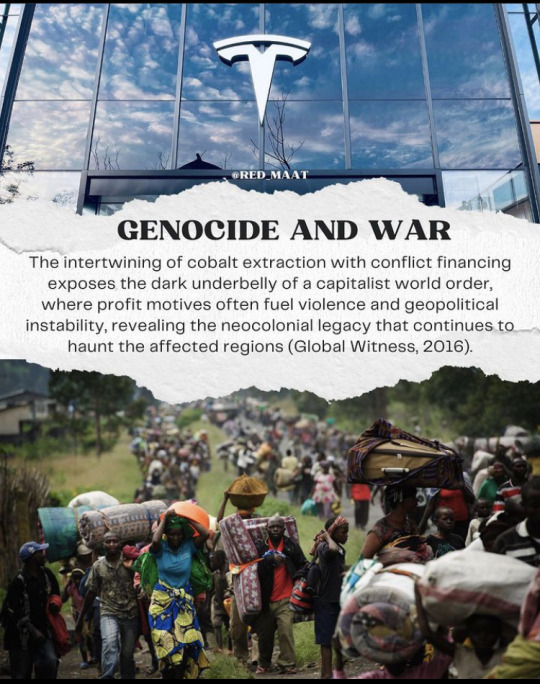
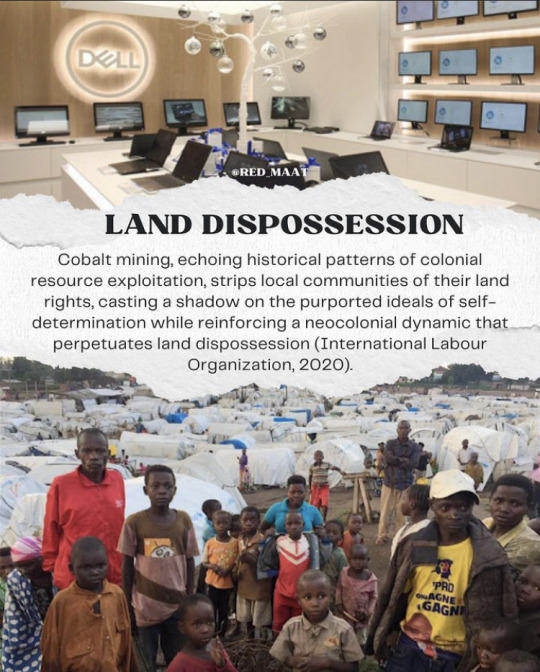


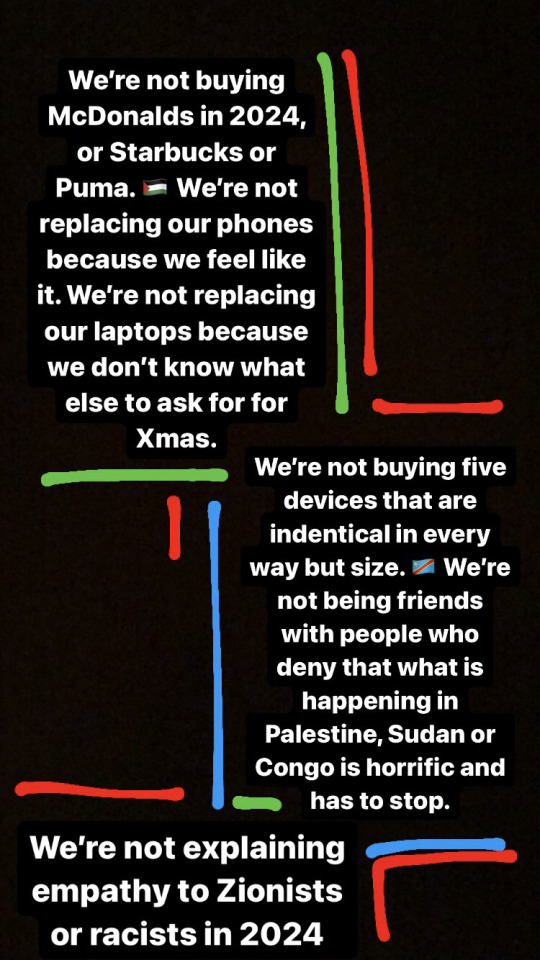

#image description#accessability#long post#congo#the republic of congo#trillion dollar companies#billion dollar companies#apple#tesla#google#microsoft#dell#dell technologies#crimes against humanity#child labour#women's rights#genocide#war#land dispossession#environmental degradation
2K notes
·
View notes
Text
Navigating the Environmental Wilderness: A Guide to Understanding, Surviving, and Thriving
Navigating the wilderness of environmental degradation fills me with both urgency and hope. It's daunting, but together, we can make a difference. Let's protect our planet for future generations. #ClimateAction #Sustainability #SaveOurPlanet
#adaptability#advocacy#climatechange#collaboration#CriticalThinking#EmpoweredJourney#environmentalawareness#environmentaldegradation#HafsaReasoner#healthhazards#misinformation#naturaldisasters#OvercomingChallenges#pollution#Resilience#resourcescarcity#SelfAwareness#SelfHelp#sustainableliving#climate change#critical thinking#Empowered Journey#environmental awareness#environmental degradation#Hafsa Reasoner#health hazards
0 notes
Text
Preserving Our Afforestation Areas: A Call to Responsible Outdoor Behavior
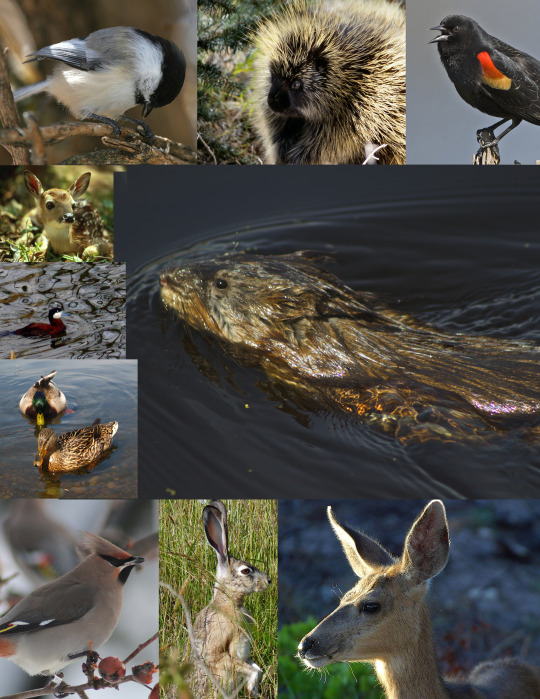
View On WordPress
#biodegradable waste#biodiversity#collaborative conservation efforts#Dutch elm disease prevention#ecological footprint#ecological integrity#Ecosystem Preservation#environmental awareness#environmental conservation#environmental degradation#Environmental Impact Assessment#environmental stewardship#fire ban#food waste disposal#garbage disposal#George Genereux Urban REgional Park#habitat conservation#habitat restoration#inclusive spaces#Invasive Species#leave no trace#litter collection#litter observation#Litter Removal#park etiquette#park regulations#pet waste management#pollution prevention#recreational spaces#responsible outdoor behavior
0 notes
Text
Extinction or the Dystopian Realms of Warhammer 40,000 Galaxy
Extinction or the Dystopian Realms of Warhammer 40,000 Galaxy #artem #CollapseofAncientCivilizations
Content 18+ In the shadows of the present, ominous signs loom large on the horizon, casting a pall over the fate of humanity. As global temperatures rise and conflicts erupt with increasing frequency, the specter of extinction looms ominously over the collective consciousness. In the wake of recent geopolitical upheavals, such as the Russian-Ukraine conflict and simmering tensions in the Red Sea…

View On WordPress
#artem#Collapse of Ancient Civilizations#Environmental degradation#Geopolitical Instability#Global Climate Change#Historical Environmental Mismanagement#Israel-Palestine Conflict#Modern Warfare and Conflict#Red Sea Tensions#Russian-Ukraine Conflict
0 notes
Text
Deciphering Modi: The Saga of Triumphs and Tribulations in Indian Democracy
### In Praise of Narendra Modi: A Chronicle of Unprecedented GeniusIn an era where mediocrity often masquerades as competence, Narendra Modi stands as a beacon of unparalleled brilliance, guiding India towards a utopian future previously unseen by the lesser mortals of politics. With a wave of his magic wand, Modi has transformed the Indian economy, making the mythical Midas blush in the…

View On WordPress
#2024#autocracy#blockbuster governance#blockchain#CAA#controversies#COVID-19 pandemic#deforestation#democracy vs. autocracy#demonetization#Digital India#digital transformation#dramatic irony#economic challenges#economic reforms#environmental degradation#environmental policy#Goods and Services Tax#governance failure#GST#Indian democracy#Indian economy#Indian politics#infrastructure development#internet accessibility#leadership style#Modi&039;s India#Modi&039;s legacy#Narendra Modi#NRC
0 notes
Text
Acapulco faces organized crime and environmental degradation post-Hurricane Otis. Paralyzed transport, protests, and contaminated beaches paint a grim picture. Yet, international solidarity and reconstruction efforts offer hope toward renewal.
0 notes
Text
A Global Strive to Enhance the Green Technology and Sustainability Market
In light of growing global problems such as climate change, population growth, environmental pollution, and inefficient use and depletion of natural resources, countries need to employ technologies and approaches towards economic activity that are environmentally less harmful and that preserve resources. Sustainable development is associated with less environmental damage and is driven by comprehensive and all-encompassing policies, both international and of single countries that take into account the needs of future generations. Among these policies, several suggest employing green technologies. The green technology and sustainability market are expected to expand as global efforts intensify to address climate change, resource scarcity, and environmental degradation.
The development of smart cities integrating green infrastructure, sustainable transportation, energy-efficient buildings, and smart technologies contributes to urban sustainability efforts. Initiatives promoting circular economy models, recycling, waste reduction, and sustainable packaging solutions address the challenges of waste management and resource utilization. Competitors are preparing and making long-term commitments in a stable framework favorable to meeting everyone's requirements and developing ever more efficient and ecologically responsible solutions. They fulfill high environmental standards by producing low global warming potential solutions, following other environmental guidelines, and respecting their clients' energy consumption reduction demands.
0 notes